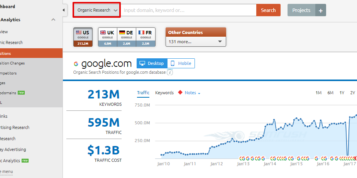The worlds of SEO and PR are more closely intertwined than ever before. SEOs want quality branding, great content and high authority links. PRs regularly deliver all three without necessarily realising the search value they’re adding. While SEOs can definitely teach PRs a thing or two about digital and are typically process driven and therefore good at execution, what lessons can PRs chuck back over the fence?
Get the message
PR 101 and one of the fundamentals of any marketing campaign is the messaging. Clients often think they have 20 important things they need to say in every piece of content, but they don’t. And even if they refuse to believe there are two or three messages that are most important, you’d do well to remind them that the target audience will probably only remember one, so a laser focus on USPs is important. This is an important lesson for SEO folk. If the most creative link building campaigns leave clients in messaging wilderness, saying all the wrong things to the wrong people, then you’ll end up confusing their prospects, and likely do more harm than good. Engage the client in a messaging workshop and ensure the results are maintained throughout all content.
We are not worthy…
Not a 1992 Mike Myers film reference, more a reminder of the importance of working with news worthy material: “I know what we’ll do”, said Ms. Serp to Mr. D. Isavow (they were always destined for a career in search). “This client is opening a new office next month. Let’s write a press release, hyperlink the company name, and then send it to the local press. It’ll be a veritable link bonanza.”
*One week later*
“Oh. No-one published it. I wonder why?”
Well we know don’t we boys and girls? It’s because it wasn’t news – or certainly wasn’t positioned as such. Creating newsworthy content and distributing it to industry, local and maybe even national media can be a great way to build links. But it really does have to be interesting. If in doubt, look for the money. ‘XX opens new office’ is boring 99% of the time. ‘New £5 million town centre investment creates 50 jobs’ is interesting 99% of the time, but it’s the same story. It’s called spin.
Get to the point
You’ve crafted a great ‘outreach’ email (SEO speak); it’s detailed, it’s eloquent, and it’s jammed full of interesting and compelling reasons for the recipient to care about the content you’re promoting. But no-one’s responding to you. In fact your email software’s telling you no-one’s even opening the message. What’s happened?
Unfortunately journos and influencers in general don’t have a lot of time but do have overflowing inboxes. Plus that message pane in their email client is about 25 characters wide. If those characters aren’t compelling then you’re ignored. If they do decide to look at the body of your email, they’ll only read the first paragraph. If it doesn’t contain the most interesting information in the first line then you’re ignored. The remainder of para one should contain the rest of the most important info and make it explicitly clear why the content’s relevant to them. Most of the time that’s as far as they’ll go, so your carefully crafted witticism in para two, essential detail in para three and call to action in para four, are ignored. Want to be successful at email ‘outreach’? Make their lives easier.
Hanging on the telephone
The most effective pitching often involves phoning and ‘selling’ your content. This is the phone equivalent of email ‘outreach’. Same rules apply – be relevant, be brief.
“I have way too many contacts for phone pitching.”
You probably don’t. How many of them are actually relevant? Good phone pitching is the staple of any solid PR agency, and these days, it’s a staple of SEO agencies too. And it’s not a case of downloading a list of media contacts from a database, handing it and a script to the most junior member of your team and telling them to crack on (this happened to me on my first day in PR – I was pitching the latest development in Networked Attached Storage (NAS) tech and called several packaging trade mags as they’d been returned in a media database search for ‘storage’ titles). I was lucky, the journos I spoke to were fairly sympathetic and I received only mildly scathing criticism for not researching the titles in advance. It can be a lot worse, and justifiably so if you’re wasting their most precious resource – time.
However, if you figure out how your content can help them do their jobs prior to phoning (if they work on a certain column or make use of infographics for example, then you know what’ll appeal to them in advance). As always, get to the point quickly, suggest – but don’t assume you know – how your content will work for them, and ask if they’d be interested in receiving it. Then, when you email it through with a related subject line, they’ll be much more likely to review it and potentially use it. Good phone pitching a) increases open rates and likelihood of publication and therefore links, and b) begins to build relationships that’ll become immensely valuable in the longer term and lead to more opportunities.




